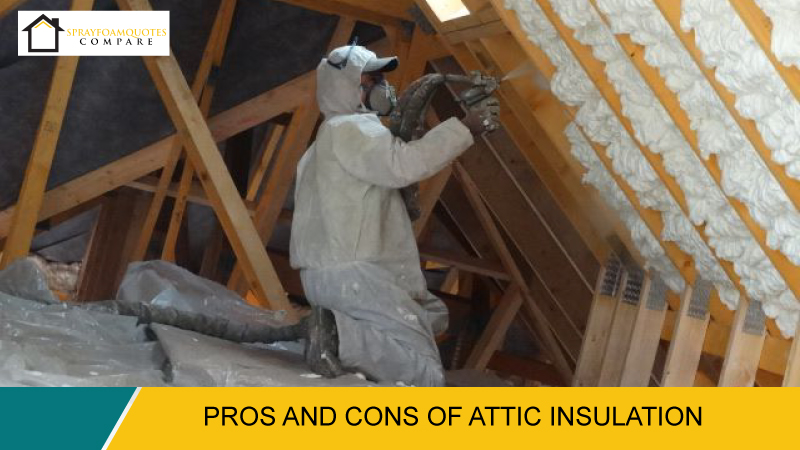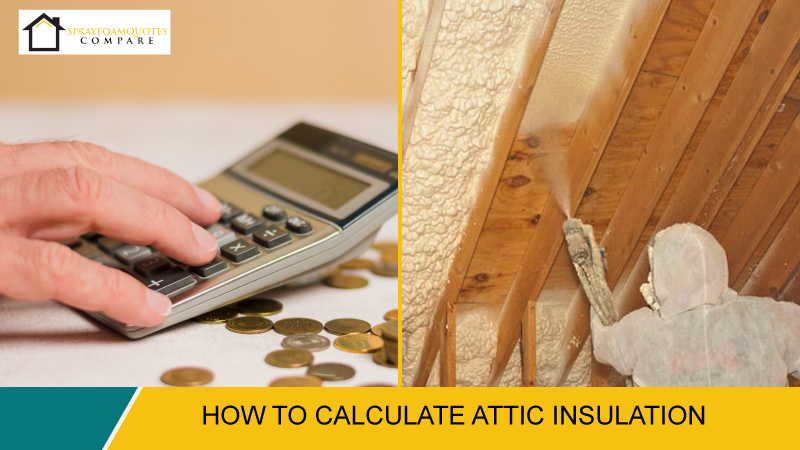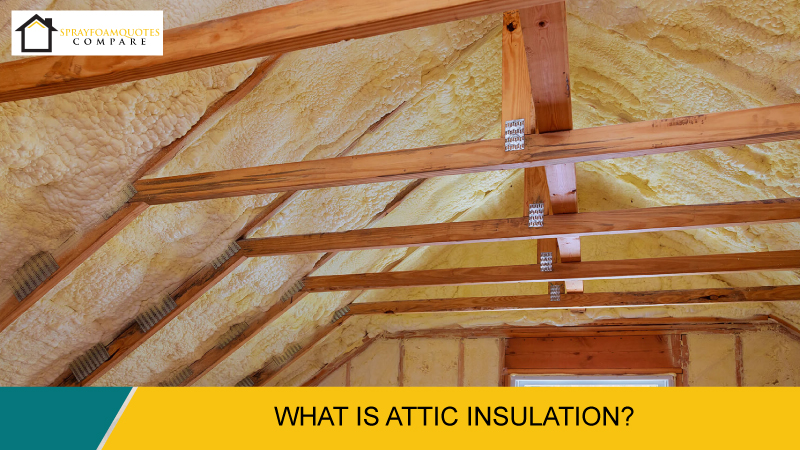Attic Insulation cost depends on the area size, like which type of home you want to insulate Detached, Semi-detached, or Terraced. And labor costs most tradespeople will charge a day rate of around £250 for installation.
What is Attic Insulation
“Attic insulation is a process of the thermally insulating attic by using traditional or man-made insulation materials” like PIR boards, mineral fiber, fiberglass wool, Polystyrene Sheets, and environmentally friendly or natural insulation materials including wood fiber, Jute, and sheep’s wool. It simply aids in regulating room temperature. And choosing the right attic insulation material is an important task in itself.
How to insulate an attic?
- Finely clean the attic room and use the desired insulator so that all the equipment like rafters and vertical stud work is clearly visible.
- Install the vapor membrane layer between the rafters by developing pockets where installation is to be made. Cover all edges with tape. Use big size material to avoid gaps
- After the insulation process, pack it tightly to avoid any possible gap between rafters and the attic.
Pros and Cons of Attic Insulation Types

There are different kinds of attic insulation that can be exploited by everyone.
FIBERGLASS BATT ATTIC INSULATION
Fiberglass batt insulation is highly appreciated by many people and consists of small glass fibers. This version of batt insulation comes in pre-cut sections that can be laid down wherever required.
One should be vigilant and wear protective eyewear, hand gloves, and face mask as it causes skin irritation before installing them. Let’s discuss both pros and cons of fiberglass batt attic insulation.
PROS Of Fiberglass Attic Insulation
- Cheap price
- Easily Installed
- Can be used in obstructed areas
CONS Of Fiberglass Attic Insulation
- Less effective in heat retention
- Results into skin irritation sometimes
FIBERGLASS ROLL ATTIC INSULATION
Similar to the above-stated insulation type with slight differences and comes in larger pieces. It consists of glass pieces compressed by plastic rolls easily transportable and can be broken down into desired lengths.
PROS
- Best Suited for wide areas
- Comes in different lengths falling between 20 & 40 feet
- Fewer gaps leave behind
- Advanced fiber Technology
- Shed-resistant
CONS
- Coverless area than batts insulation
- Not so good at heat retention
CELLULOSE ATTIC INSULATION
This kind of insulation uses only recycled paper products for insulation. Sometimes ammonium borate is added to make it pest and fire-resistant and to create a better living space for your loved ones. As cellulose is denser than other insulation materials, provides great heat retention in the winters.
Pros
- Eco friendly
- Denser than fiberglass
- Highly resistant to fires and pests
- Good soundproof insulation
- Lowers heating and cooling cost
CONS
- The entire installation process causes dust
- Less utilized
LOOSE-FILL FIBERGLASS ATTIC INSULATION
Interestingly fiberglass is also made available in loose-fill insulation form and requires special equipment to spread this material into the right place, hence handled by only insulator specialists.
Pros
- Best suited for odd areas
- Can easily fill wall spaces
- Rapid installation
CONS
- Requires special installation equipment
- Not available in pre-cut pieces
SPRAY FOAM ATTIC INSULATION
This type of insulation involves three types of plastic: polyurethane, polyisocyanurate, or polystyrene. It is simply installed by spraying it into foam boards.
PROS
- The best insulating material in the market
- Moisture barrier
- Most preferred insulation type
- Less time-consuming process
- No mold or mildew formation
- Prevent air leaks
CONS
- Bit expensive insulation type.
Material Required for Attic Insulation
- Wood fiber.
- Layer for Vapor Control
- Vapor permeable membrane.
- Taping for Gapes
- Timber battens.
- Rafter trays.
How much does it cost to install insulation in the attic?
The rough cost of attic insulation will vary greatly depending on your location, the materials you choose, and the size of your space. “According to some experts on average the base cost of attic insulation is around £1 to £7 per square metre. Most homeowners may anticipate investing £1,500 for materials and labor”.
You may save a lot of money by completing your own attic insulation, but you need to be extra confident in your abilities. Otherwise, you run the danger of performing a poor job and having to redo it later to remedy any problems.
Although installing attic insulation is DIY-friendly compared to many other home repair and updating chores, it may be a messy and (in some situations) dangerous operation
Large quantities of batt and blown-in insulation are being sold in home improvement centers, and insulation blowers are rented as well. Insulating your attic all by yourself rather than paying a professional will save you between £0.25 and £2.50 per square foot in labor costs, but you will also be required to learn how to block off the attic’s intake vents to avoid roof damage.
How to calculate Attic insulation?

An attic insulation cost calculator, despite its complex appearance, is essentially rough mathematics that tells you how much insulation you’ll need to adequately insulate your home.
Insulation, in its most basic form, is any material sprayed in a home’s gaps or fissures to control heat movement. Heat escapes from your home during the frigid month of winter and rapidly enters your attic space during the hot summer months if you don’t possess sufficient insulation.
Follow the steps stated below to find out how much insulation you’ll need.
- Firstly determine the size of your attic.
Measuring your attic space can be simple if your attic is square-shaped or rectangular shaped. Simply measure the length and width of your attic than just multiply those two digits to get the square footage of your attic.
You’ll definitely need to gauge the height and breadth of each triangle in your attic if it’s made up of triangular spaces. The area’s square footage is then calculated by dividing the base in half and multiplying it by the triangle’s height.
- Determine the current level of insulation
You won’t be able to measure old insulation if your attic isn’t insulated. However, if you already have insulation, measure it from the attic floor to the top of the insulation. With this knowledge, you’ll be able to estimate how much extra insulation you’ll need to increase your energy efficiency.
Consult the Department of Energy’s insulation chart if you’re unsure how much more insulation you’ll need.
- Calculate
Simply divide the square footage of your attic by the square footage of insulation in the manufacturer’s packaging (assuming you’re buying pre-cut batts or rolls) to figure out
how much insulation to buy. This will give you a general estimate of how much quantity of insulation you will need and how much quality insulation would cost. You now have access to an attic quantity calculator that is both simple and effective.
Also More Query
What type of insulation is used for the Attic?
The simplest DIY insulating material is blanket insulation which is an ideal option for attic spaces. It comes in natural fibres, synthetic fibres, fibreglass, and mineral wool. For attics with little barriers and unreached beams and shafts, this kind of insulation works best. Attics with limited height and numerous barriers, such as cross beams and vents, are ideal for adding loose-fill insulation. It comes in fibreglass, cellulose, and mineral wool and can be successfully blown over existing insulation. The most efficient material is cellulose, which has an R-value of 2.2 to 3.8 per inch, but might get mouldy if exposed to moisture.
How to find the best Attic Insulation Installers near you?
It may seem difficult to choose trustworthy insulation installers, but if you already know where to look, you can pick a qualified and experienced contractor. Here are some tips to help you choose the best insulation provider. Obtain at least three quotes for the insulation work that your property requires. Ask potential contractors if they are licenced in the region you are in and if their licences are up to date before hiring them. Some states demand that they possess individual, contractor, or business licences. Lastly, ask them whether they provide a warranty in case of any mishap.


